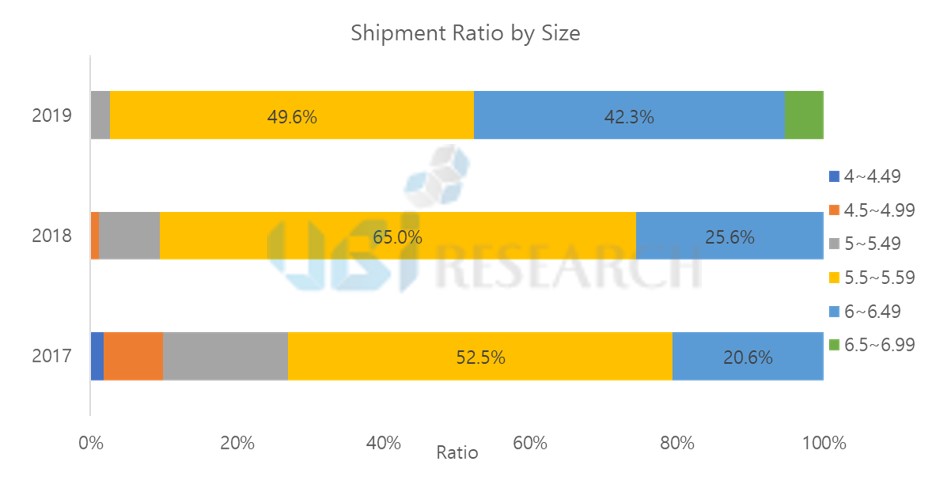OLED flagship size for smartphones ranges from 5.5 inches to 6.5 inches
Reporter : Daejeong Yoon
According to UBI Research’s 3rd quarter OLED display market track, the size of OLED for smartphones is gradually shifting from 5.5~5.99 inches to 6~6.49 inches.
Among the OLED shipments for smartphones of 430 million units in 2017, 5.5-5.99 inches accounted for 52.5%, but in the shipment performance until the third quarter of 2019, 5.5-5.99 inches decreased to 49.6% and 6-6.49 inches increased to 42.3%.
In 2017, more than 5.5 inches of OLED smartphones were 78.5%, but now more than 5.5 inches are 91.9%. This reflects that consumers are demanding larger OLED smartphones.
When analyzed by detailed size, 5.5-inch OLED shipments were the most at 39.5%, and second, 6.4-inch OLEDs were the highest at 20.1%. Most of the 5.5-inch are rigid OLEDs and are mainly used by Galaxy J series, Chinese companies such as Huawei, Xiaomi, Oppo and Vivo. In the 6.4 inch, the main application is the rigid OLED for the Galaxy A series.

<Source: UBI Research Q3 OLED Market Track>
Because the Galaxy S series, which adopts flexible OLED, and Apple’s iPhone X are very expensive in the global OLED smartphone market, the market growth is very slow. In comparison, the Galaxy A series and J series are growing fast because they are intended for the mid-priced smartphone market.
While Samsung’s Galaxy has lost market share in the Chinese market, Chinese smartphone makers Huawei, Xiaomi, Oppo and Vivo are expanding the Chinese market as smartphones using rigid OLEDs from Samsung Display.
This means that Samsung Electronics lost the Chinese market, but Samsung Display’s OLED business is gradually expanding its influence in the Chinese market. The growing market share of OLED smartphones in the Chinese smartphone market indicates that Samsung Display can overwhelm the OLED market in the future, and that revenues will be updated every year.



